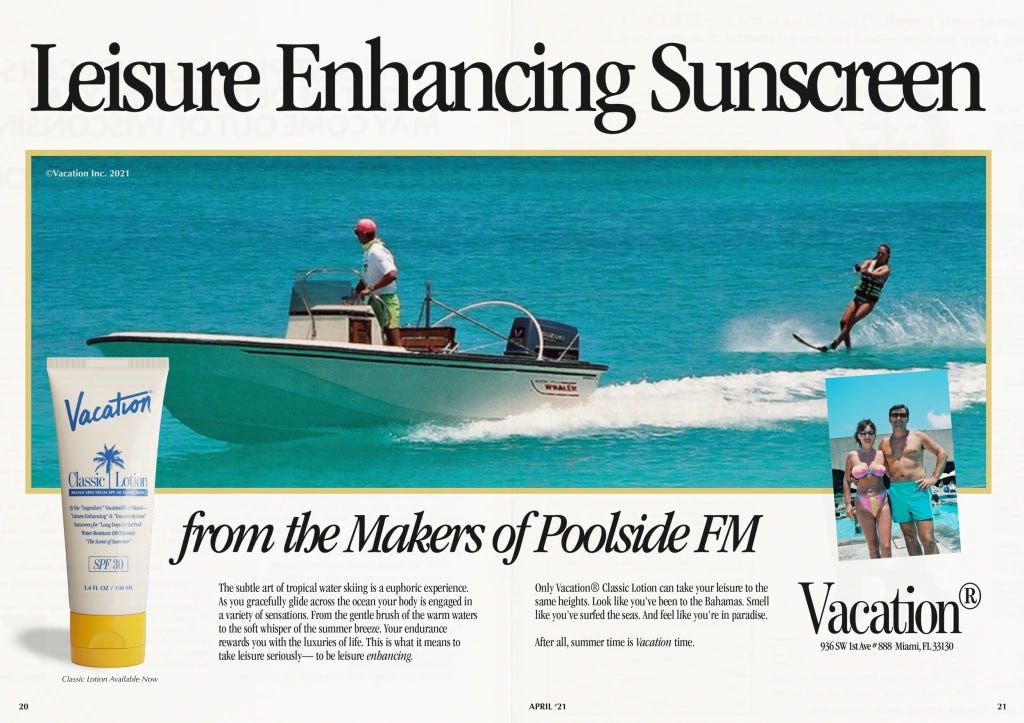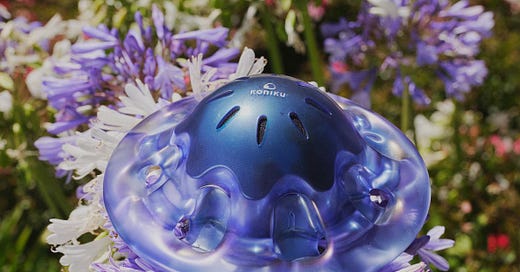Design Lobster #106 has sniffed out some distinctly smelly design stories for you this week. Suncream that will take you back to a carefree 80s summer and a biological computer that can recognise odours. Enjoy!
✨Enjoying Design Lobster? Please share it with a friend, colleague or fellow designer.
Question: Can a brand be a smell?

I always keep a keen eye on what designer Marty Bell is working on. The inventor of Poolside.fm – the internet radio sensation that cheered millions throughout the 2020 lockdowns with its non-stop feel-good music and nostalgic stylings - last April launched a companion range of suncreams called Vacation®. It was a decidedly lateral move to switch up from a purely digital experience to something so sensual, but the team went all in, working with Arquiste Parfumeur’s Carlos Huber and Givaudan’s Rodrigo Flores-Roux to design a unique scent for the lotions that would instantly conjure warm lazy days by the pool.
The result blends fruity scents like coconut and banana with more offbeat notes like chlorine, swimsuits and vinyl. Reviewers of the lotion describe how the smell isn’t particularly exotic but really does somehow take you right back to childhood holidays.
It’s fascinating to me how Bell has managed to build out a whole brand from a vibesy music playlist, a real feat of creative transfiguration. Apparently he’s now working on web3 projects so I’m intrigued to see what comes next.
Design takeaway: How could you use scent to tell the story of your design?
☀️ Indulge your 80s fantasy on the Vacation® website
Object: Konikore
This funky looking device is made by a startup called Koniku and contains a biological computer that can detect smells with an accuracy that reportedly exceeds that of trained dogs. Founder Oshiorenoya Agabi’s vision is for the sensors to be deployed everywhere. Used to detect bombs and drugs in airports, in farms to monitor crops and in our homes to detect Covid and other changes to our health.
The industrial design was conceived by Californian agency Whipsaw. It plays up to the biological with nostril-like holes for airflow and an organic shape that somewhat resembles a jellyfish. I think it looks somehow rather friendly.
My mind immediately goes to the creative possibilities of machine scent-detection. Playlists that adapt to smells of a country walk and therapeutic aids for people living with anosmia. I’m sure you can think of many more!
Design takeaway: What if your design could smell things?
👃 Watch a video explaining how the technology works
Quote: “Good design is like a refrigerator, when it works no-one notices it but when it doesn’t it sure stinks.”
– Irene Au, Design Partner at Khosla Ventures
I just had to use this quote this week. It picks up on a contradiction about design that we’ve heard about in previous issues. Often, the very best designs slip into the background, and we mainly notice those that fail in some way.
Have a great week,
Ben 🦞
Enjoyed this week’s Design Lobster? Let me know by clicking the heart button ❤️
👇




